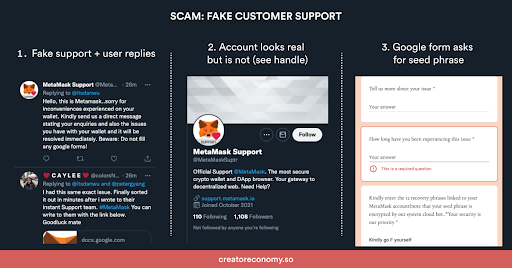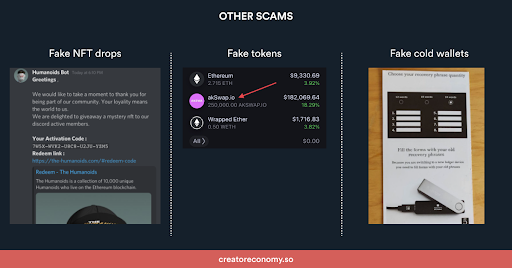
By: Zeneca
One of the dangers with any new technology is that, unfortunately, scammers and nefarious actors will attempt to take advantage of the less savvy. We saw this with the early days of the internet and e-mail, and it’s no different with web3.
Unlike with your credit card or bank, where you can ask them to undo a fraudulent transaction, this is not an option when it comes to crypto. For this reason it’s important to be especially vigilant when it comes to protecting your assets.


The industry is regularly coming up with new tools and protections for how to ensure user safety in web3. It’s important to remember that we’re still in the early days, and things will continue to improve as time goes on. Remember, there once was a time when email had no spam filter.
Now that we have covered the basics of cryptocurrencies and wallets, we’ll share primers on the three main web3 fields: DeFi, NFTs, and DAOs.
In our next section, we’ll cover: “What is DeFi?”
Learn more:

If you’re interested in building the future digital economy, we want to hear from you!